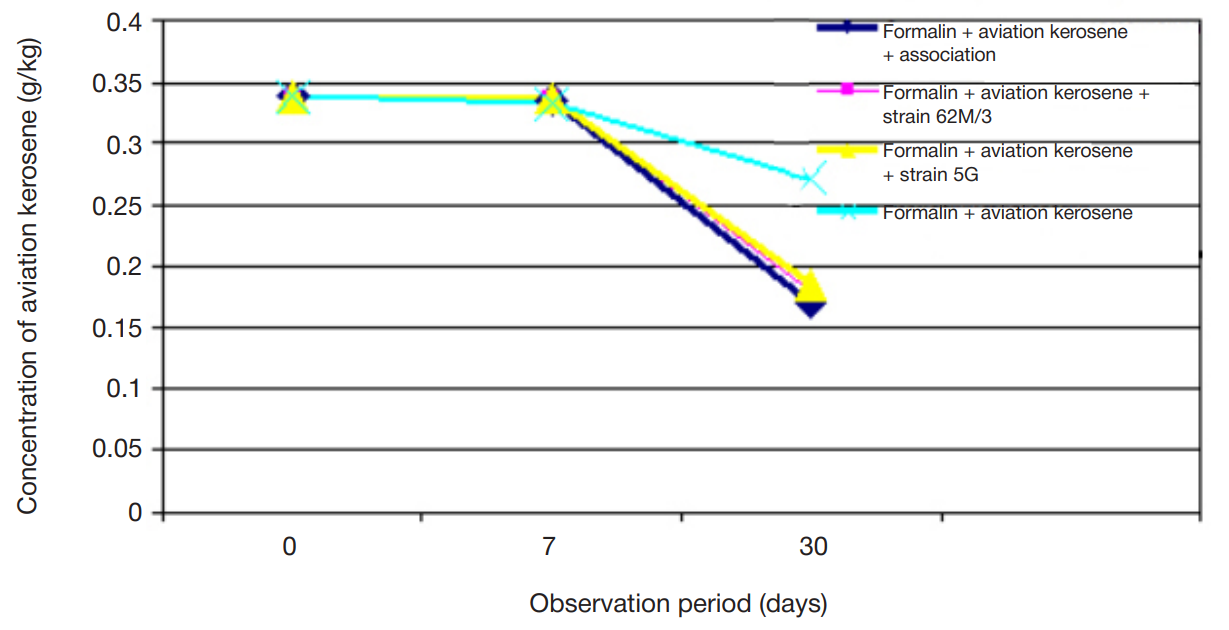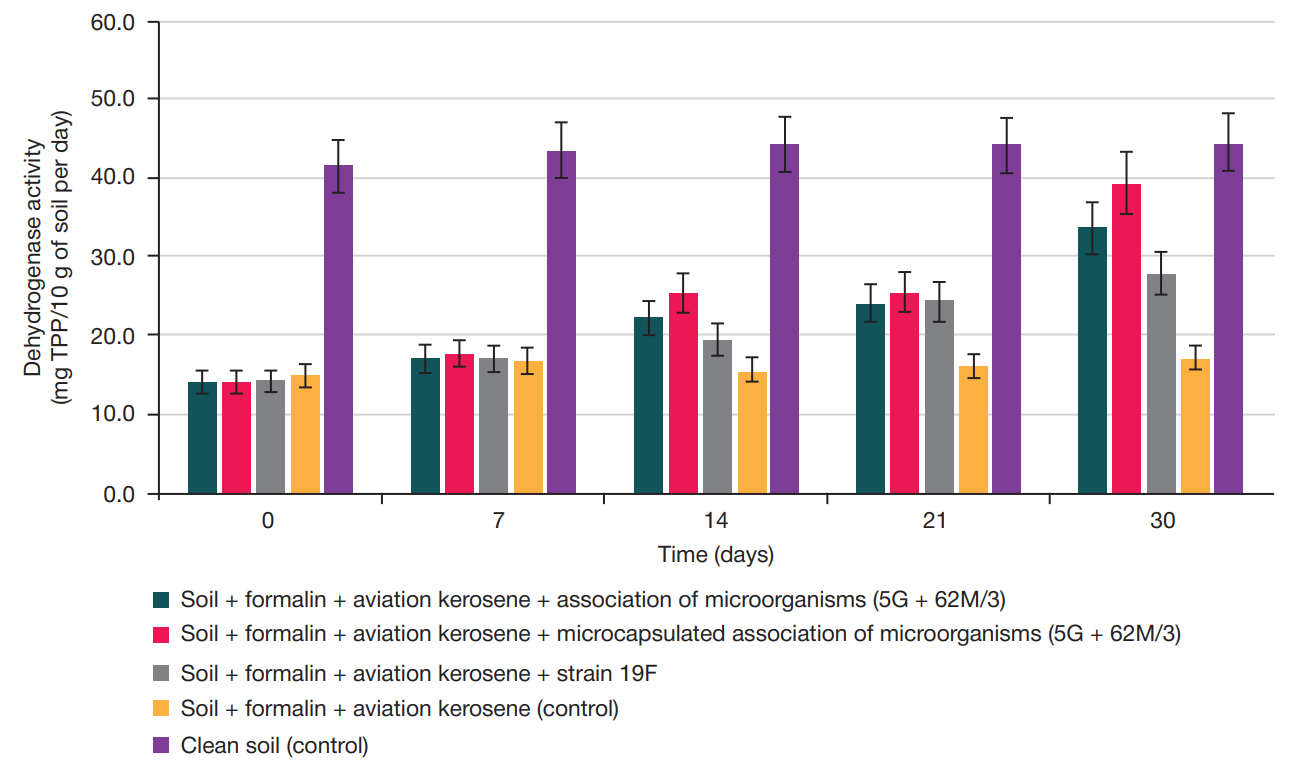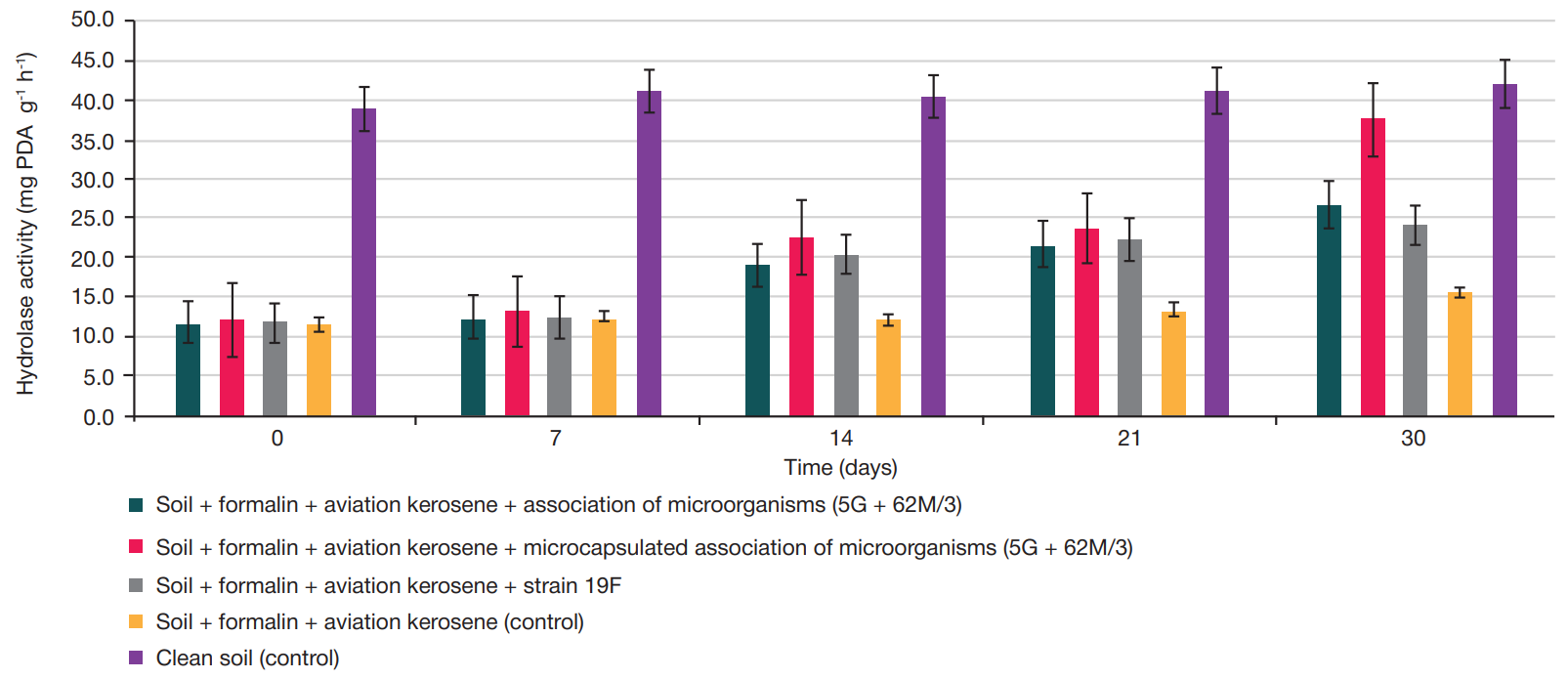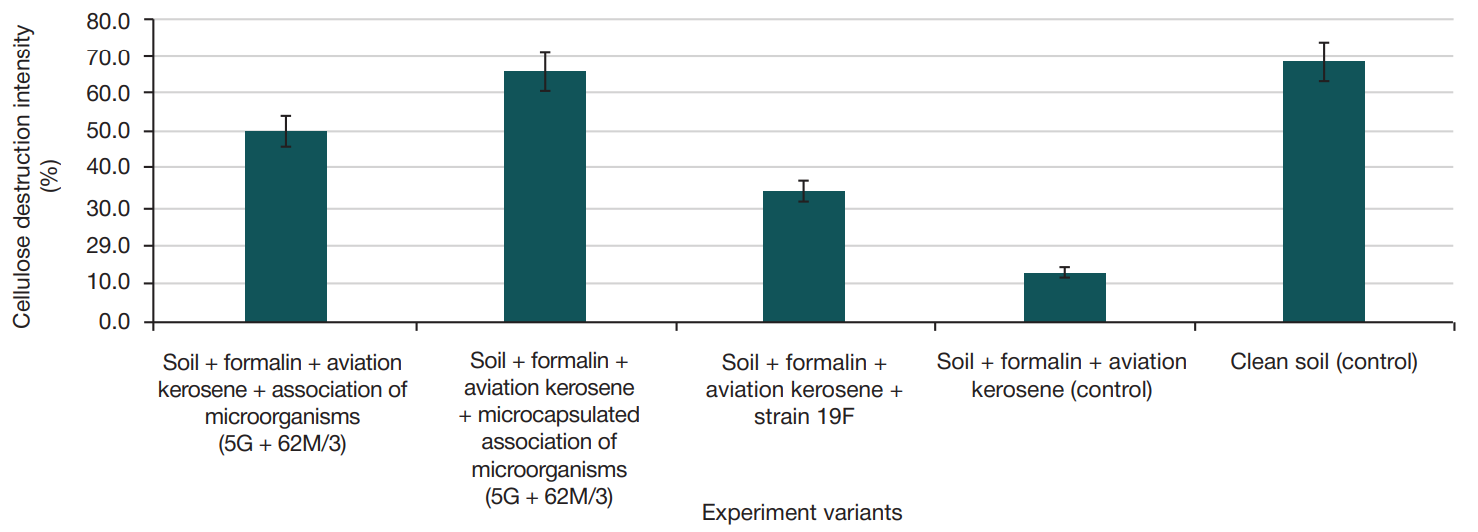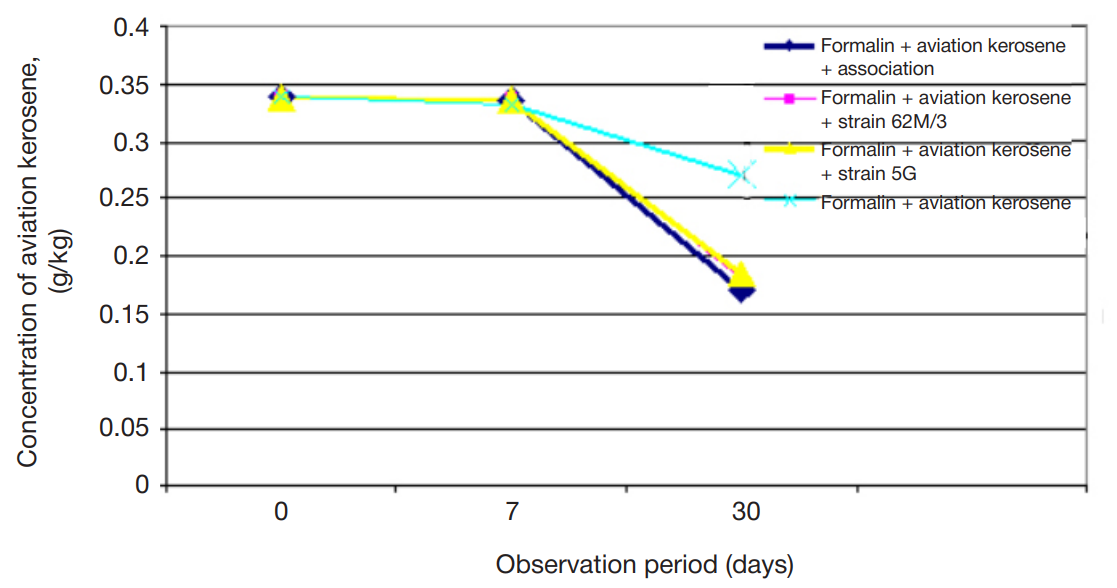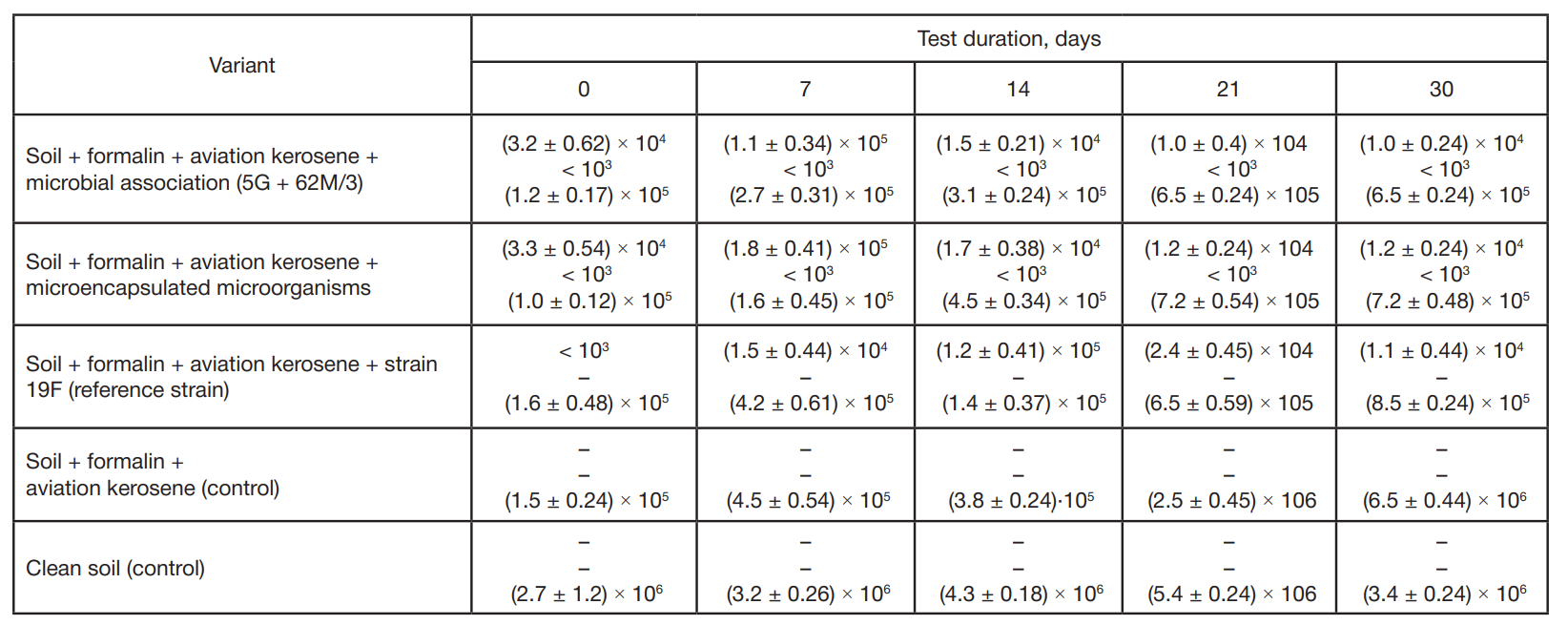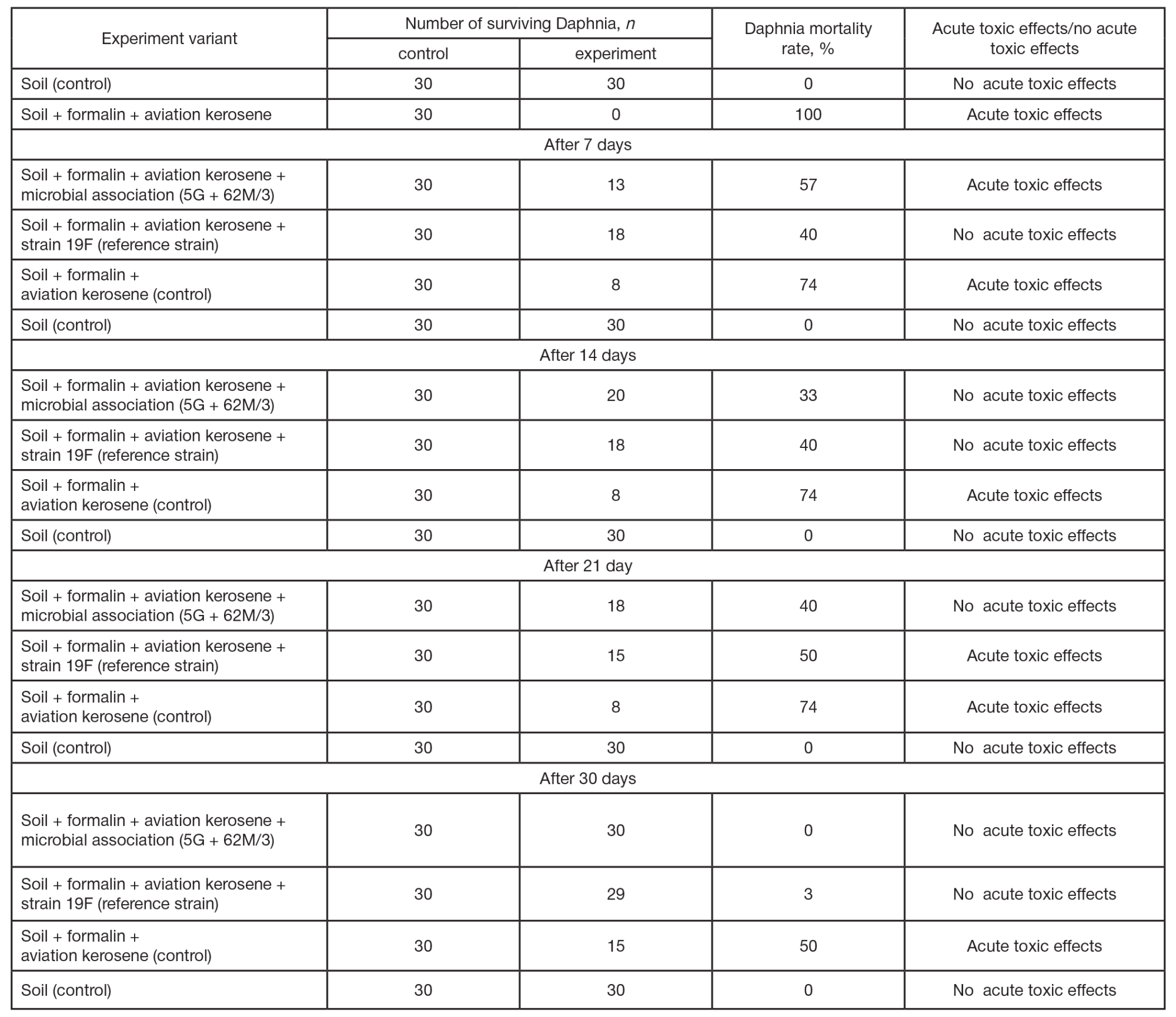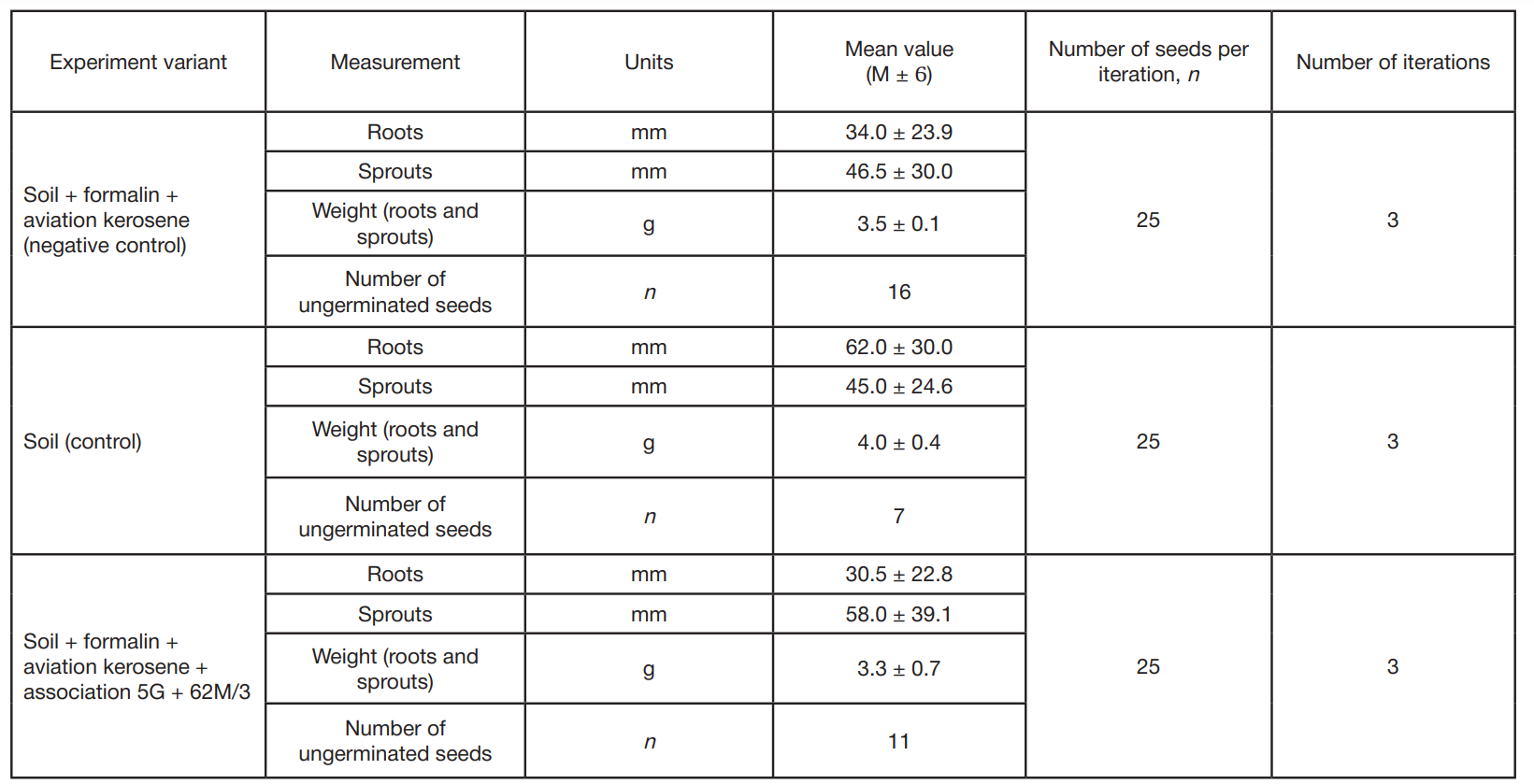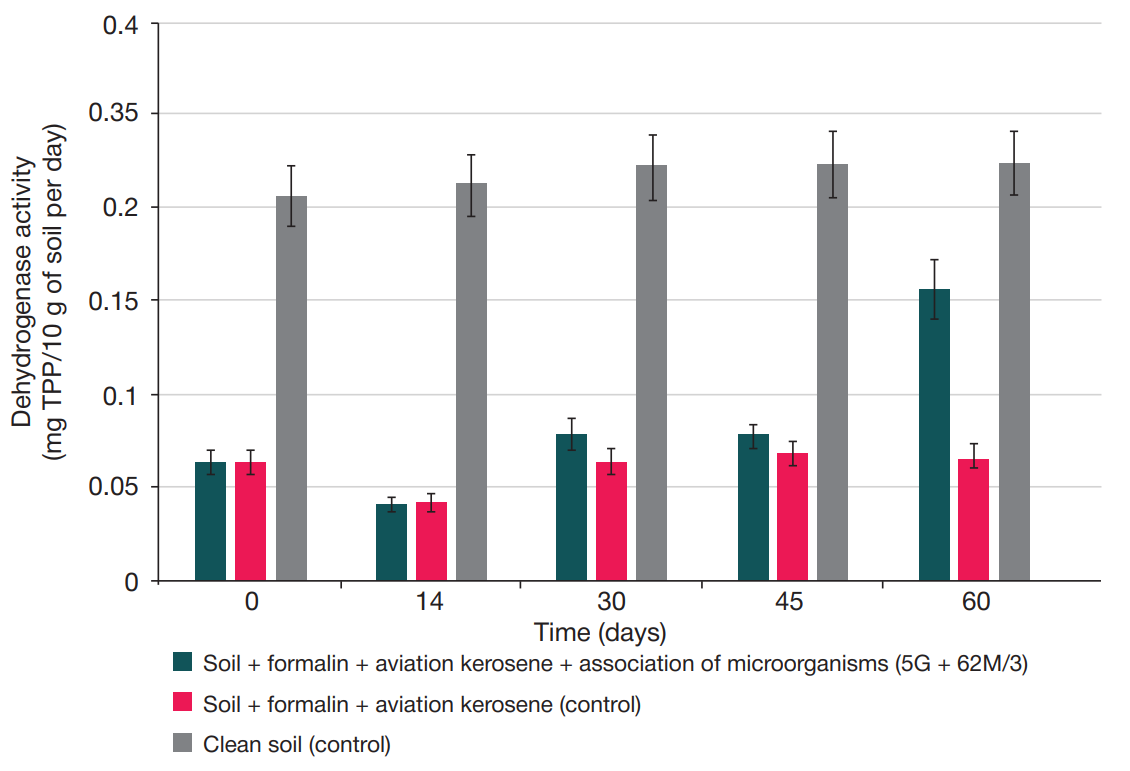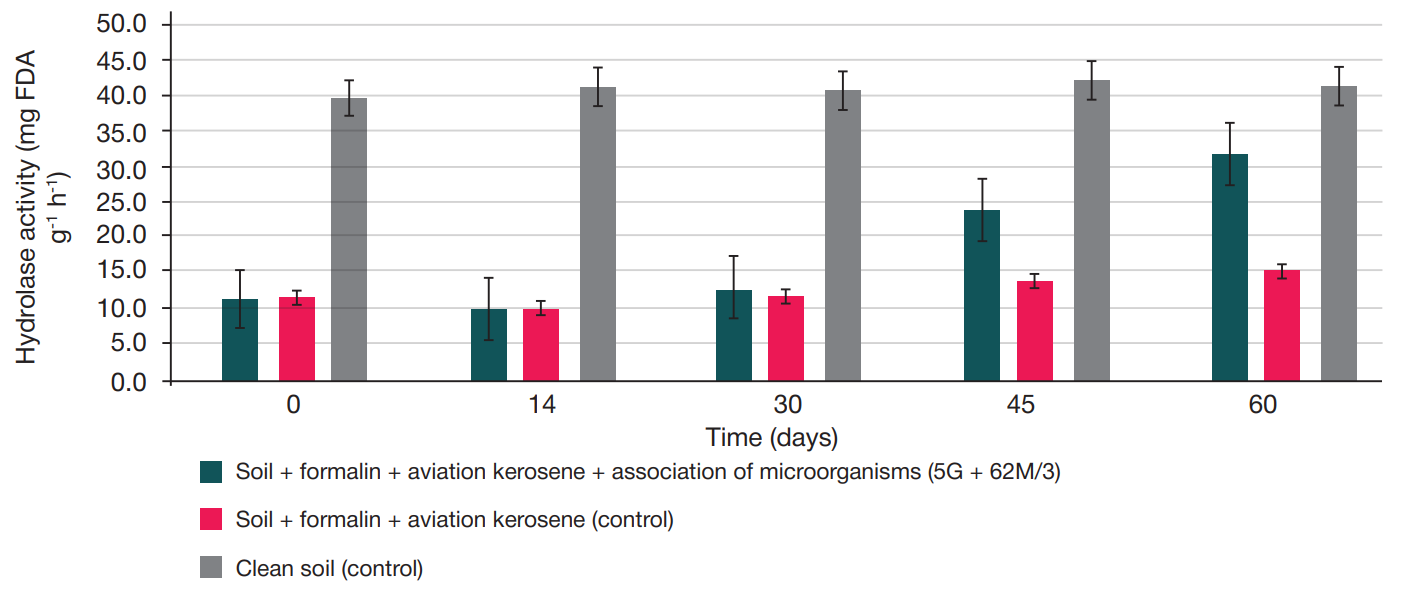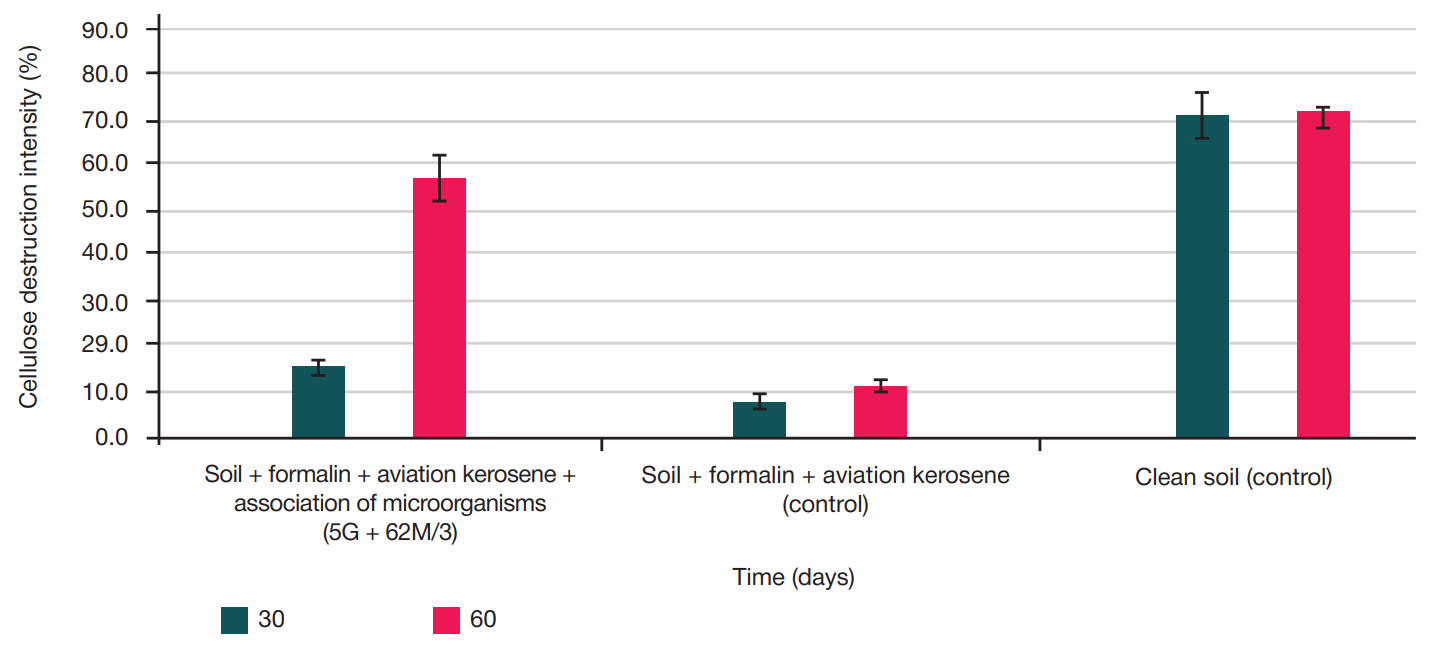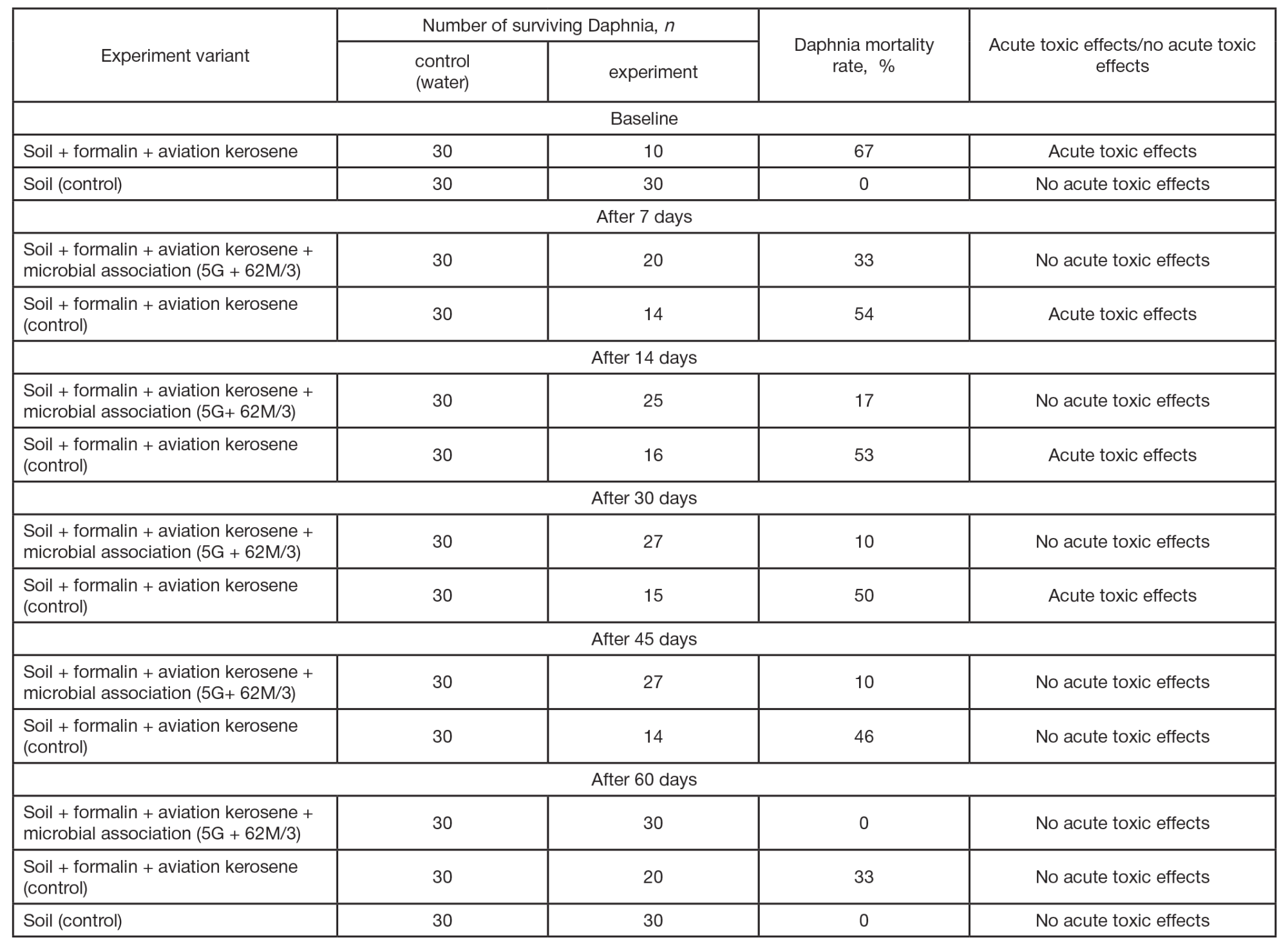
This article is an open access article distributed under the terms and conditions of the Creative Commons Attribution license (CC BY).
ORIGINAL RESEARCH
Development of microbial preparation for bioremediation of soils contaminated with rocket fuel components
1 Research Center for Toxicology and Hygienic Regulation of Biopreparations of the Federal Medical Biological Agency, Bolshevik, Moscow region, Russia
2 National Research Center Institute of Immunology of the Federal Medical Biological Agency, Moscow, Russia
Correspondence should be addressed: Gennady A. Zharikov
Lenina, 102А, Bolshevik, Serpukhov city district, Moscow region, 142253, Russia; ur.oibcixot@vokirahZ
Funding: the study was carried out under state orders of the Federal Medical Biological Agency of Russia (№ 26.008.02.0, № 22.009.21.800).
Author contribution: Khaitov MR — general research management; Zharikov GA — planning and management of laboratory and field research, experimental procedure, data analysis; Krainova OA — microbiological testing (isolation and selection of bacterial destructors of rocket fuel, preparation of microbial suspensions for experiments, biodestructor collection maintenance); Marchenko AI — microbiological and biochemical testing (enzyme activity of soil), biotests for assessment of soil toxicity, statistical data processing.
Compliance with ethical standards: animals were treated in accordance with the principles of Good Laboratory Practice. Veterinary protocols № 669 and № 677 for strains 5G и 62М/3 were approved by the Bioethics Commission (protocol № 165/2019 of 19 February 2019, protocol № 169/2019 of 16 April 2019).
